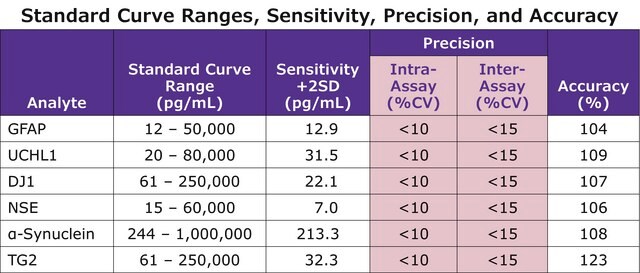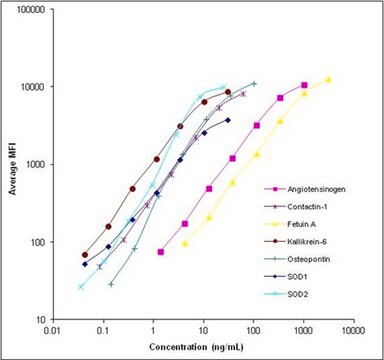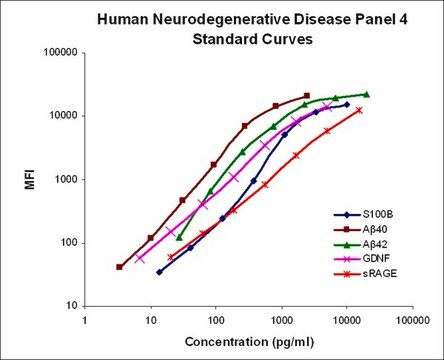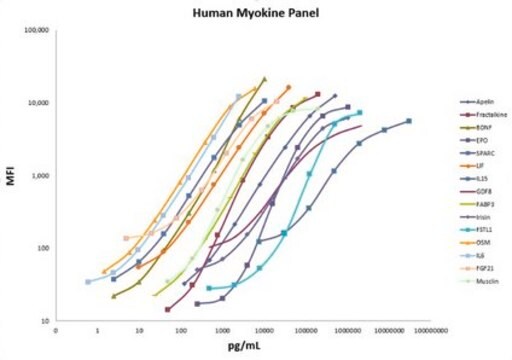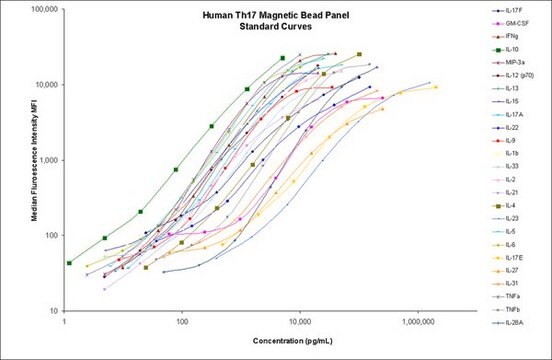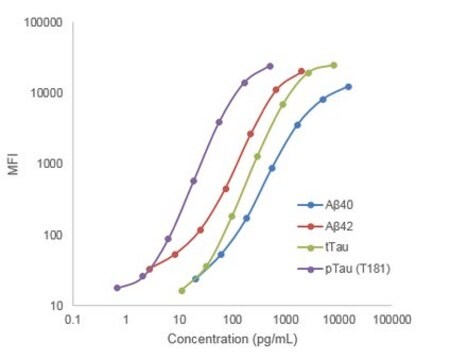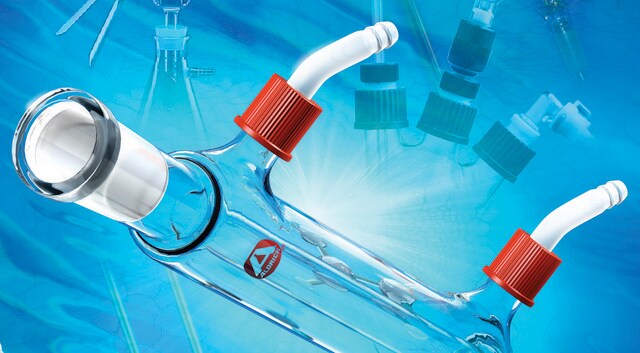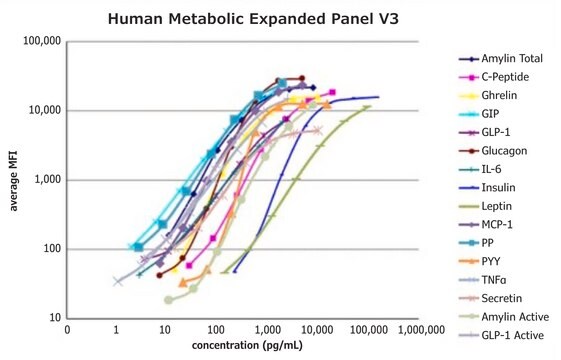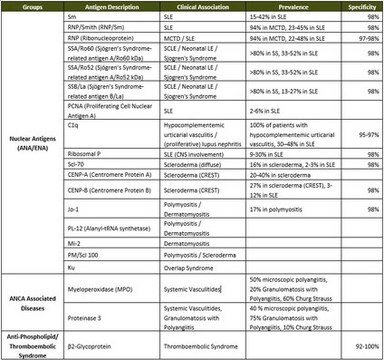HNS2MAG-95K
MILLIPLEX® Human Neuroscience Magnetic Bead Panel 2 - Neuroscience Multiplex Assay
The analytes available for this multiplex kit are: Angiogenin, ApoE4, FABP3, Ferritin, Neurogranin, and TREM2.
About This Item
Productos recomendados
reactividad de especies
human
fabricante / nombre comercial
Milliplex®
assay range
accuracy: 124%
(Neurogranin)
accuracy: 84%
(FABP3)
accuracy: 85%
(ApoE4)
accuracy: 94%
(TREM2)
accuracy: 97%
(Angiogenin)
sensitivity: 11.0 pg/mL
(MinDC + 2SD; TREM2)
sensitivity: 14.3 pg/mL
(MinDC + 2SD; FABP3)
sensitivity: 162.8 pg/mL
(MinDC + 2SD; ApoE4)
sensitivity: 19.9 pg/mL
(MinDC + 2SD; Neurogranin)
sensitivity: 5.8 pg/mL
(MinDC + 2SD; Angiogenin)
sensitivity: 6.1 pg/mL
(MinDC + 2SD; Ferritin)
standard curve range: 15-50,000 pg/mL
(TREM2)
standard curve range: 2-10,000 pg/mL
(Angiogenin)
standard curve range: 24-100,000 pg/mL
(FABP3)
standard curve range: 244-1,000,000 pg/mL
(ApoE4)
standard curve range: 5-20,000 pg/mL
(Neurogranin)
standard curve range: 6-25,000 pg/mL
(Ferritin)
inter-assay cv: <10%
intra-assay cv: <5%
(Angiogenin)
inter-assay cv: <10%
intra-assay cv: <5%
(FABP3)
inter-assay cv: <10%
intra-assay cv: <5%
(TREM2)
inter-assay cv: <15%
intra-assay cv: <10%
(Ferritin)
inter-assay cv: <15%
intra-assay cv: <10%
(Neurogranin)
inter-assay cv: <15%
intra-assay cv: <5%
(ApoE4)
técnicas
multiplexing: suitable
método de detección
fluorometric (Luminex xMAP)
Descripción general
MILLIPLEX® Human Neuroscience Bead Panel 2 is a 6-plex kit to be used for the simultaneous quantification of any or all of the following analytes in cerebrospinal fluid (CSF), serum/plasma and cell/tissue culture supernatants for homogenates: Angiogenin, ApoE4, FABP3, Ferritin, Neurogranin, TREM2.
Panel Type: Neuroscience
Especificidad
Cross-reactivity between the antibodies and any of the other analytes in this panel is non-detectable or negligible. There is <5% cross-reactivity from ApoE2 and ApoE3 recombinant proteins on the ApoE4 beads.
Aplicación
- Analytes: Angiogenin, ApoE4, FABP3, Ferritin, Neurogranin, TREM2
- Recommended Sample type: Plasma, Serum, CSF, Cell/Tissue culture supernatant
- For Plasma/Serum a 1:10 dilution is recommended for the optimal detection of the analytes FABP3, Ferritin, Neurogranin and TREM2.
- For Plasma/Serum a 1:200 dilution for ApoE4 and Angiogenin is recommended.
- Because the sample dilutions differ for Plasma/Serum samples ApoE4 and Angiogenin cannot be plexed in the same assay as FABP3, Ferritin, Neurogranin and TREM2.
- CSF samples require a 1:10 dilution and so may all be plexed together
- Cell/Tissue culture supernatants or homogenates may be used neat or diluted in appropriate control medium.
- Bead diluent must be present in order to detect Angiogenin. (Biotinylated-Angiogenin detection antibody is included in the bead diluent.)
- Research Category: Neuroscience
Características y beneficios
Envase
Almacenamiento y estabilidad
Información legal
Cláusula de descargo de responsabilidad
Palabra de señalización
Danger
Frases de peligro
Clasificaciones de peligro
Acute Tox. 3 Dermal - Acute Tox. 4 Inhalation - Acute Tox. 4 Oral - Aquatic Chronic 2 - Eye Irrit. 2 - Skin Sens. 1
Código de clase de almacenamiento
6.1C - Combustible acute toxic Cat.3 / toxic compounds or compounds which causing chronic effects
Certificados de análisis (COA)
Busque Certificados de análisis (COA) introduciendo el número de lote del producto. Los números de lote se encuentran en la etiqueta del producto después de las palabras «Lot» o «Batch»
¿Ya tiene este producto?
Encuentre la documentación para los productos que ha comprado recientemente en la Biblioteca de documentos.
Contenido relacionado
Neuroscience multiplex assays, such as MILLIPLEX® multiplex assays, enable simultaneous measurement of neuroscience-related biomarkers to gain a better picture of neurodegenerative diseases, neurological disorders, and neuropeptide/neurohormone signaling.
Nuestro equipo de científicos tiene experiencia en todas las áreas de investigación: Ciencias de la vida, Ciencia de los materiales, Síntesis química, Cromatografía, Analítica y muchas otras.
Póngase en contacto con el Servicio técnico